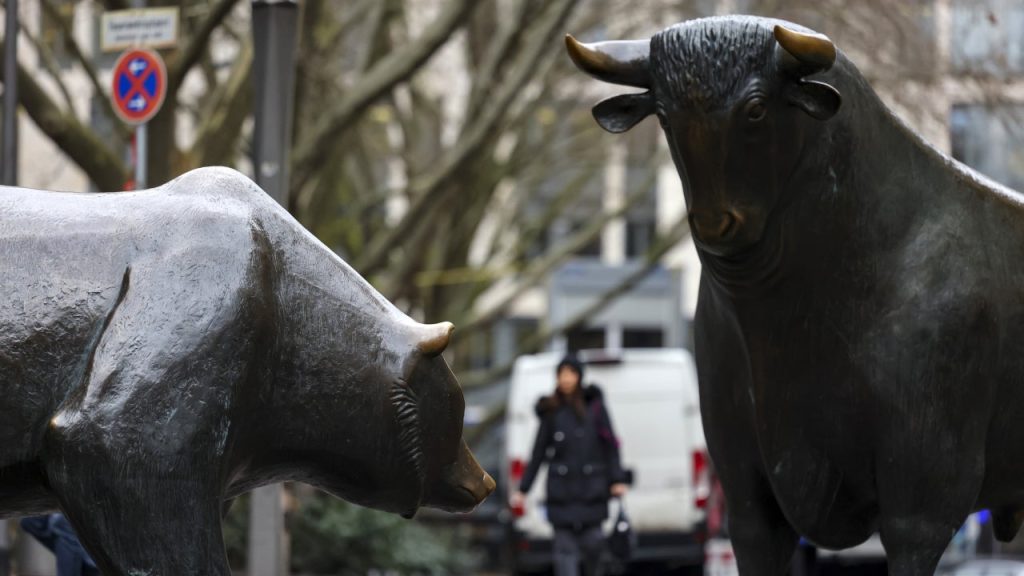If you follow the stock market at all, you’ve probably heard plenty of references to bulls and bears. But what do these animals have to do with investing? Let’s take a look at what people mean when they say someone is bullish or bearish.
Key takeaways
- Bulls expect prices to rise over a certain period, while bears expect them to fall.
- Bull and bear markets often last for several years, and it’s challenging to anticipate their beginning or end.
- Dollar-cost averaging helps investors take advantage of market fluctuations over the long term.
What it means to be bullish
When someone is bullish, it means they are expecting prices to rise over a certain period of time. The term applies to broad market indexes such as the S&P 500, specific industries, entire asset classes such as real estate or commodities and even individual stocks. It might help to think of a charging bull raising its horns to remember that to be bullish is to expect prices to charge higher.
A bull market has no specific definition, but is a sustained period when prices are rising and generally expected to keep doing so. Typically, a bull market is thought to have occurred when prices have risen 20 percent or more off a recent low. The average bull market lasts for about four to five years. However, the longest bull market in U.S. history lasted nearly 11 years, from March 2009, near the end of the Great Recession, until the global pandemic hit in March 2020.
What it means to be bearish
On the other hand, to be bearish means to expect that prices will be falling over a period of time. This term also applies to any financial asset and could be used to describe an outlook for an individual stock such as Nvidia, or stocks in general. To help remember that bearish means falling prices, think of a bear clawing down on its prey.
A bear market is essentially the opposite of a bull market, meaning that it is a prolonged period of declining prices. A bear market generally occurs when prices have declined by at least 20 percent from a recent high. Bear markets have historically not lasted as long as bull markets in the stock market. The U.S. stock market entered a bear market in March 2020 when prices fell more than 30 percent in just a matter of weeks. But the recovery was nearly as swift, with a new bull market starting later that year.
U.S. stocks entered a bear market again in January 2022, as investors dealt with concerns over high inflation, rising interest rates and a possible recession on the horizon. This most recent bear market for the S&P 500 officially ended about 10 months later on Oct. 12, 2022.
How to invest during bull or bear markets
If you could anticipate when bull or bear markets were going to begin and end, you could adjust your investments accordingly to take advantage of the changing conditions. The reality is that once bull and bear markets become clear to investors, it’s probably too late to take advantage of the change.
For stocks, it’s important to remember that these are part of your long-term investment plan and you’ll experience both types of markets during your investing life. Stocks tend to go up more than they go down over time, so it’s likely that you’ll see more bull markets than bear markets. Consider holding low-cost index funds for the long term and know that ups and downs are to be expected.
One approach that can help you take advantage of the market’s ebbs and flows is known as dollar-cost averaging. By making consistent contributions and investments over time, you’re able to buy more shares when prices are lower, and fewer shares when prices are higher. These contributions could be part of a workplace retirement plan like a 401(k) or your own traditional or Roth IRA.
Bottom line
Bulls think prices are going higher, while bears think they’re headed lower. Try not to get caught up in trying to anticipate when a bull or bear market might begin or end. Think of your investments as part of your overall financial plan and do your best to take a long-term view.
— Bankrate’s Rachel Christian contributed to an update of this story.
Editorial Disclaimer: All investors are advised to conduct their own independent research into investment strategies before making an investment decision. In addition, investors are advised that past investment product performance is no guarantee of future price appreciation.
Read the full article here
















